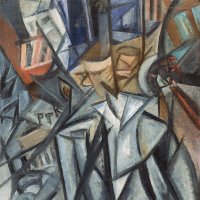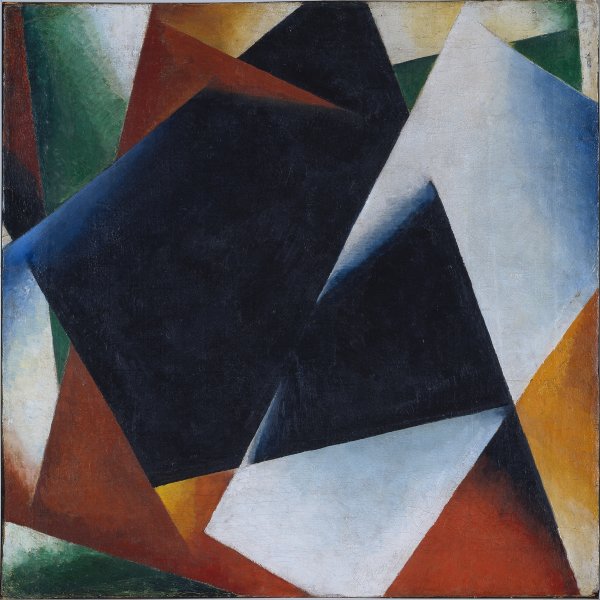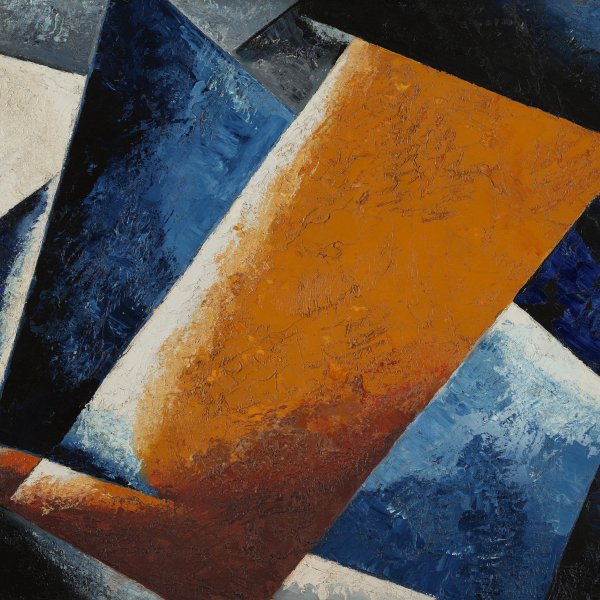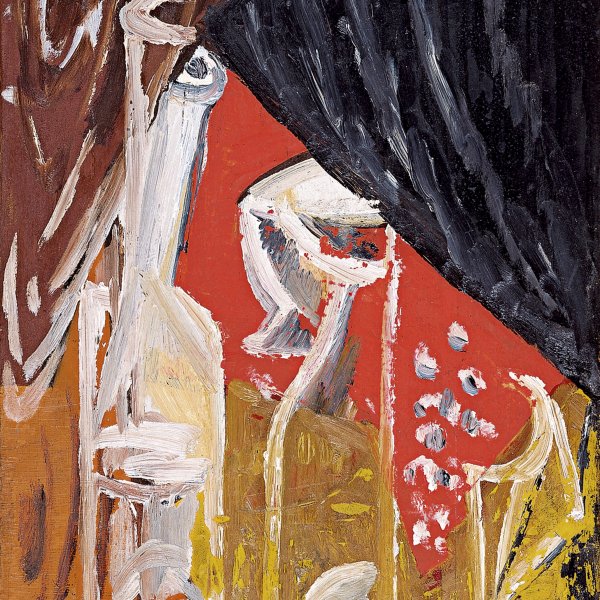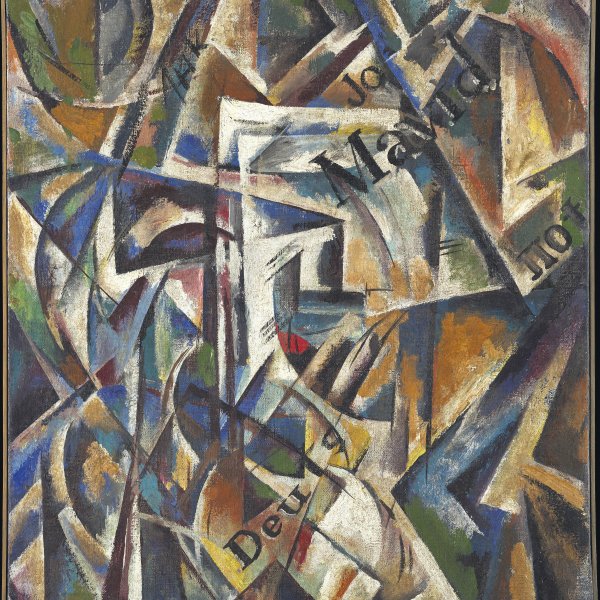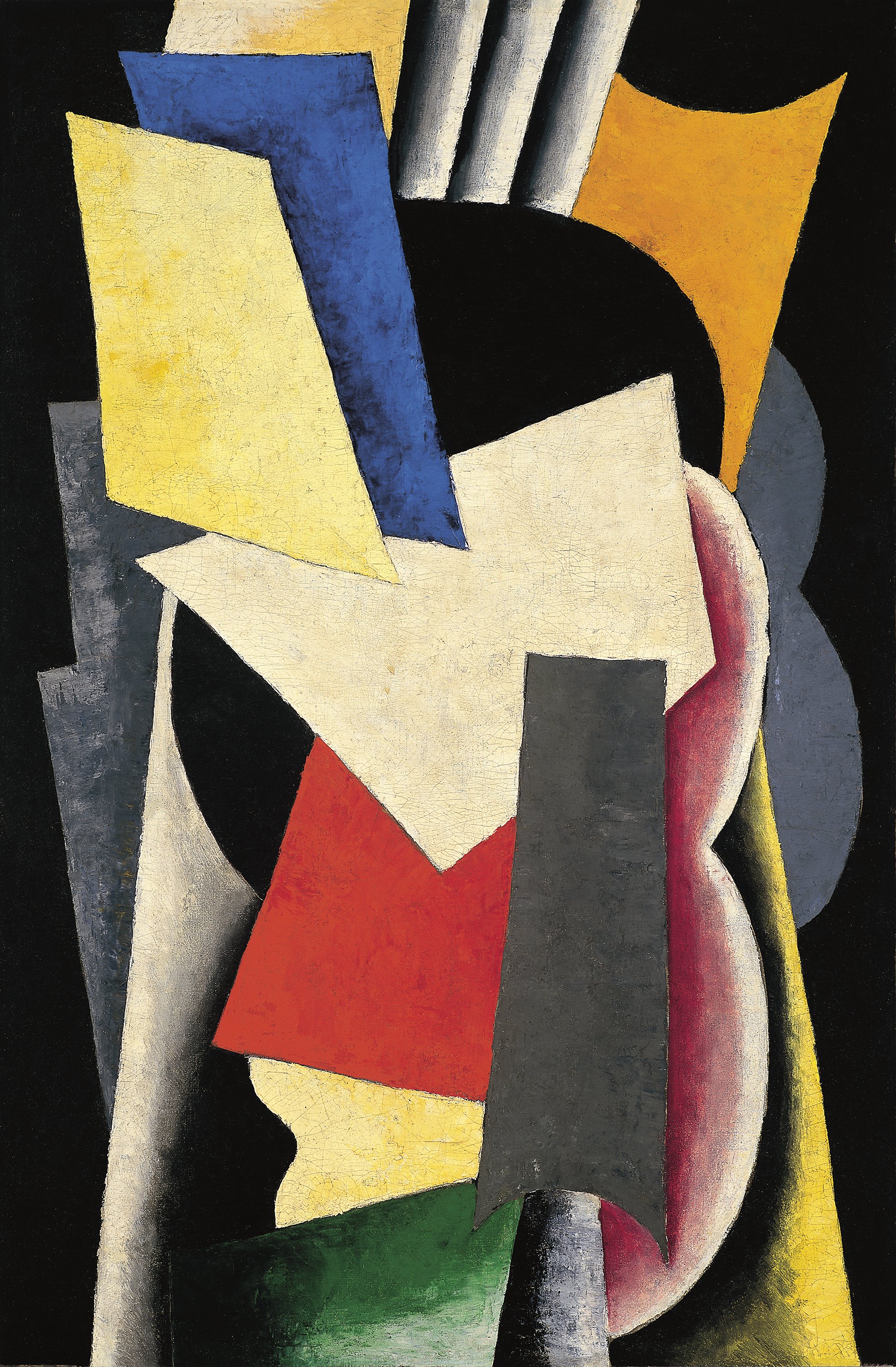Painterly Architectonic (Still Life: Instruments)
1915
Oil on canvas.
105.5 x 69.2 cm
Museo Nacional Thyssen-Bornemisza, Madrid
Inv. no.
715
(1976.88
)
Room 43
Level 1
Permanent Collection
Painterly Architectonic (Still Life: Instruments) by Liubov Popova is a key work to understanding the evolution of Russian art from Cubism to abstraction. Popova took part in 0.10. The Last Futurist Exhibition of Paintings, organised by Malevich in December 1915, with a series of Cubo-Futurist works, and thereafter her art underwent transformations as she became influenced by the
Suprematist ideas.
In the so-called Painterly Architectonics, a suite of non-objective paintings executed between 1916 and 1918, Popova began to explore the possibilities of an abstract vocabulary, pursuing Malevich’s ideas. The choice of the term “Architectonics” stems from her intention of highlighting the constructive aspects of the image and the creation of rhythms of deeply coloured, layered planes in order to achieve highly structured compositions. The canvas belonging to the Thyssen-Bornemisza collection is one of the earliest of the set, as although recent studies have dated it to 1916, John E. Bowlt and Nicoletta Misler suggest it may have been painted in 1915 and shown in the aforementioned 0.10 exhibition. The composition retains a few references to the Cubist world of objects, but is more geometrised with layered “floating” planes, the interaction of which, as Magdalena Dabrowski points out, creates a tension, yet maintains a dynamic balance within the picture.
The risky combination of primary colours, which gives her works great luminosity, is one of Popova’s contributions to Suprematism. As was generally the case in these compositions, some areas of the picture are painted with a certain texture, indicating Popova’s interest in materials and their tactile properties — or faktura— which the Russian avant-garde artists regarded as the essential component of the painting.
Although she officially gave up painting in 1922 to concentrate on design, Popova, the “artist-constructor” as her contemporaries called her, was one of the staunchest advocates of abstract art in Russia, convinced that “form transformed is abstract and finds itself totally subject to architectonic requirements, as well as to the intentions of the artist, who attains complete freedom in total abstraction, in the distribution and construction of lines, surfaces, volumetric elements and colour values.”
Paloma Alarcó
In the so-called Painterly Architectonics, a suite of non-objective paintings executed between 1916 and 1918, Popova began to explore the possibilities of an abstract vocabulary, pursuing Malevich’s ideas. The choice of the term “Architectonics” stems from her intention of highlighting the constructive aspects of the image and the creation of rhythms of deeply coloured, layered planes in order to achieve highly structured compositions. The canvas belonging to the Thyssen-Bornemisza collection is one of the earliest of the set, as although recent studies have dated it to 1916, John E. Bowlt and Nicoletta Misler suggest it may have been painted in 1915 and shown in the aforementioned 0.10 exhibition. The composition retains a few references to the Cubist world of objects, but is more geometrised with layered “floating” planes, the interaction of which, as Magdalena Dabrowski points out, creates a tension, yet maintains a dynamic balance within the picture.
The risky combination of primary colours, which gives her works great luminosity, is one of Popova’s contributions to Suprematism. As was generally the case in these compositions, some areas of the picture are painted with a certain texture, indicating Popova’s interest in materials and their tactile properties — or faktura— which the Russian avant-garde artists regarded as the essential component of the painting.
Although she officially gave up painting in 1922 to concentrate on design, Popova, the “artist-constructor” as her contemporaries called her, was one of the staunchest advocates of abstract art in Russia, convinced that “form transformed is abstract and finds itself totally subject to architectonic requirements, as well as to the intentions of the artist, who attains complete freedom in total abstraction, in the distribution and construction of lines, surfaces, volumetric elements and colour values.”
Paloma Alarcó
Emotions through art
This artwork is part of a study we conducted to analyze people's emotional responses when observing 125 pieces from the museum.
Joy: 45.22%
Disgust: 2.13%
Contempt: 0.08%
Anger: 1.74%
Fear: 16.7%
Surprise: 19.95%
Sadness: 14.17%

